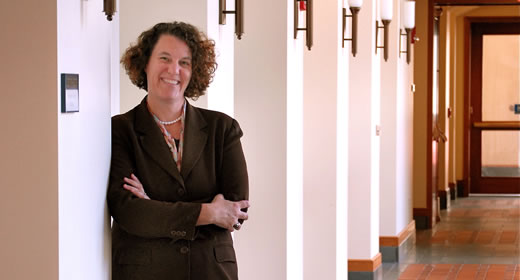
In this Sunday’s New York Times print edition, Susan Dynarski will dispute the effectiveness of online courses, particularly for less proficient students.
Drawing on research Dynarski did for the Brookings Institution last October, Dynarski’s new New York Times piece (posted early at “Online Courses Are Harming the Students Who Need the Most Help”) highlights the varying types of online courses available to students and what recent research tells us about their effectiveness.
Dynarski cites research suggesting that “blended” courses, which combine an online curriculum with traditional classroom instruction, are just as successful as in-person instruction. Unfortunately, she says, “students who are struggling in traditional classrooms are increasingly steered into “fully online” courses," which rarely include what Dynarski calls “flesh-and-blood” teaching.
Dynarski cites a study conducted in Chicago’s high schools in which students who failed algebra were randomly assigned to either online or in-person “recovery courses.” Outcomes plainly showed that the students in the online courses learned less than those receiving the in-person instruction.
Dynarski also points out the disadvantages of online education in college, specifically at nonselective and for-profit schools. “These schools disproportionately enroll low-income students who are often the first in their families to attend college,” she writes. “Such students tend to drop out of college at very high rates. Students with weak preparation don’t fare well in online college classes, as recent research by professors at Harvard and Stanford shows.”
However, Dynarski does note the benefits of online education for students with strong academic skills.
Dynarksi refers to a study performed in Maine and Vermont examining the effect of online courses on eighth graders. The study focused on students with strong math skills who were enrolled in schools without in-person algebra instruction. The students were randomly assigned to either an online algebra course or a less challenging math class in their school. Outcomes from that study indicated the online algebra students were twice as likely to complete advanced math in high school.
Further, Dynarski underscores an approach of the Massachusetts Institute of Technology, which offers free online courses in the economics of developing countries. Students who seek admittance to the school’s in-person master’s program in economics must first perform well in these online classes. This approach, she observes, “reverses the high school model in which students who fail in a face-to-face class are shifted into a more challenging online format. In M.I.T.’s program, students must first demonstrate that they can tough it out in an online class.”
Although online education has proven to be beneficial only to a select few thus far, Dynarski remains hopeful for its future: “Online education is still in its youth. Many approaches are possible, and some may ultimately benefit students with deep and diverse needs.” For now though, she cautions, “[a]cademically challenged students need a classroom with a teacher’s support.”
-- By Larry Sanders (MPP ‘18)
Susan Dynarski is a professor of public policy at the Gerald R. Ford School of Public Policy, a professor of education at the University of Michigan's School of Education, and a professor of economics at the University of Michigan's College of Literature, Science, and the Arts. She is co-director of the Ford School’s Education Policy Initiative, which engages in applied, policy-relevant research designed to improve educational achievement and outcomes.